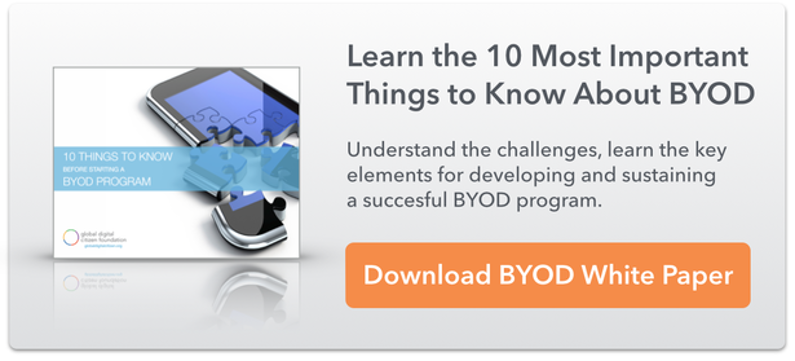Debunking 5 Common Classroom Technology Myths
With the advent of classroom technology usage in our classrooms has come a number of opposing views surrounding its effectiveness, and even its necessity. It may not be the easiest thing to adopt for some, but the fact is it's never going away. Ed-tech is here to stay, so the classroom technology myths that abound in the wake of its pervasiveness in our modern learning environments should be addressed sooner rather than later.
That's what Anna Johansson seeks to do in the eSchool News article entitled Debunked: 5 Myths About Classroom Technology. She stresses that it's not an argument for schools to adopt an all-tech curriculum that needs to happen, but rather a shift towards a mindfulness about its adoption into any kind of learning progression. It's essential for educators of all levels to educate themselves on the "ins and outs" and "do's and don'ts" of using edtech before buying into the classroom technology myths that surround it.
Early in the article, Anna mentions the lack of proof to support those classroom technology myths that claim it does more harm than good:
"For decades, schools have been scaling up the technology incorporated into the classroom ... parents, lawmakers, and even some educators have spoken out against this trend, arguing that excessive classroom technology could end up doing more harm than good, but the foundations for most of these arguments are unsupported by empirical evidence."
The question is, why have these particular classroom technology myths been tossed around in educational discussion circles for so long, and what makes them worth reconsidering?
Dissecting 5 Classroom Technology Myths
Here are 5 of the most common classroom technology myths that are circulating, and why they're't true.
- It Poses Social Limitations—Anna argues here that technology can have both a positive and a negative effect on social development; it all depends on how it's used. Technology was never meant to replace teaching or social interaction in the classroom, but rather to enhance its value.
- It's Overly Distracting—Also not necessarily true, since there were many things disrupting our classrooms regularly long before technology came into the picture. Everything from passing notes (the earliest form of texting we had) to something happening outside on the school grounds that drew away our learners' attention momentarily has plagued classroom attention for centuries. It's easy to blame a "new kid on the block" like technology, but not always particularly logical.
- It Hinders Cognitive Development—This is true to a degree, as this study on the reliance we have on GPS systems tends to indicate. It goes back to the argument that any technology that enters the classroom is meant to enhance the development of cognitive skills rather than replace them. For an interesting read and a different perspective, try this study about how technology can be used to develop critical thinking skills in our learners.
- It Affects Test Scores—There are some cases in which schools have invested millions of dollars in technology only to see little to no improvement in test scores. The problem here again is strategic. You can plug technology into your classrooms all you want, but without any kind of conscientious program that streamlines and monitors its continuing use in classroom instruction, the only thing that will get higher is your electrical bill. "Standardized tests," Anna claims, "don’t evaluate technological proficiency, nor can they accurately measure a child’s potential in different future career paths."
- It's Too Expensive—This can be the case, but it doesn't need to be. Plenty of organizations out there today are offering ways to get technology into classrooms as cheaply and effectively as possible. Here are some examples to consider in your own journey.
Read Anna Johansson's article Debunked: 5 Myths About Classroom Technology for more insights into challenging these persistent classroom technology myths.


